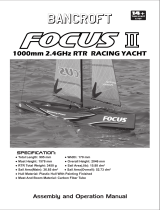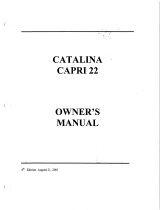
15
Item No Item Name
881105 DF95 “A” 50 micron mylar film sails
881106 DF95 “B” 75 micron mylar film sails
881107 DF95 “C” 75 micron mylar film sails
881108 DF95 “D” 75 micron mylar film sails
881109 DF95 Mast Pack A
881110 DF95 Mast Pack B
881111 DF95 Mast Pack C
881112 DF95 Mast Pack D
881113 DF95 Mast Head Pack A
881114 DF95 Mast Head Pack B
881115 DF95 Mast Head Pack (C & D identical)
881119 DF95 Jib Boom Pack A
881120 DF95 Jib Boom Pack D
881121 DF95 Jib Boom Pack C
881122 DF95 Mainsail luff Ring (PK10)
881123 DF95 Transparent Hatch(PK2)
881124 DF95 Water seal tape(PK2)
881125 DF95 Deck cloth patch(PK4)
881126 DF95 Front bumper(PK2)
881127 DF95 Sheeting pulley block(PK2)
881128 DF95 Fin box and mast fitting
881129 DF95 Rudder
881130 DF95 Carbon keel with bolts
881131 DF95 Bolts(PK4)for keel
881132 DF95 Ballast with plastic Shoe fitting
881133 DF95 Plastic shoe
881134 DF95 Pushrod
881135 DF95 Switch connector+Switch rod
881137 DF95 Jib Boom Front End Fitting(PK4)
881138 DF95 Boom Joiner (PK4)
881140 DF95 Hull decals set
881153 DF95 Mast fitting tube
881154 DF95 Mainsheet Bridle Keelboat Fitting (Pk 2)
881155 J4C05 transmitter(MODE2)with J5C01R Receiver
881505 J4C05 Transmitter
881506 J5C01R Receiver
881157 DF95 Bearing (PK4)
881158 DF95 Jib Boom Pack B
881167 DF95 white hull (incl.servo tray,deck eyes,finbox,bumper)
881168 DF95 black hull (incl.servo tray,deck eyes,finbox,bumper)
881169 DF95 blue hull (incl.servo tray,deck eyes,finbox,bumper)
881170 DF95 purple hull (incl.servo tray,deck eyes,finbox,bumper)
881171 DF95 orange hull (incl.servo tray,deck eyes,finbox,bumper)
MAINTENANCE
If properly rigged and maintained the DragonFlite 95 will be a very ‘dry’ boat. This is a very good thing as water and electrics are not the
best of friends!
There are some essential steps you need to take to keep your boat working as it should, these are:
- The bearings in the top and bottom of the Gooseneck should be washed in clean, fresh water after every outing if you sail in saltwater.
- Regularily lubricate the bearings with bearing lube or any similar product.
- Wash the whole boat and rig with clean, fresh water after every outing if you sail in saltwater.
- Open the Hatch Cover and allow the inside of the boat to completely dry out after sailing. Do not store the boat with either water or
condensation inside the hull, it will lead to electrical failure through corrosion or ‘black wire’ failure.
- Dyneema cord can shrink in certain conditions. So check often that all your rig settings remain correct.
- Handle and store the Sails with great care. Don’t leave them flapping whilst your boat sits on its stand, lay the boat down on a soft
surface with the rig downwind of the hull. When not in use keep the rigs in a rigid rig box or fairly stiff rig bag. Look after your rigs - they
are your boat’s engine!
DF95 SPARE PARTS LIST
Item No
881172
881173
881174
881175
881194
881195
881180
881181
881182
881183
881184
881185
881186
881187
881188
881189
881190
881191
881192
881193
881196
881197
881569
881198
881199
881203
881204
881209
881210
881211
881212
881217
881218
881225
881227
881228
881526
881504
880536
880552
880623
881564
Item Name
DF95 yellow hull (incl.servo tray,deck eyes,finbox,bumper)
DF95 dark blue hull (incl.servo tray,deck eyes,finbox,bumper)
DF95 red hull (incl.servo tray,deck eyes,finbox,bumper)
DF95 green hull (incl.servo tray,deck eyes,finbox,bumper)
DF95 Silver hull (incl.servo tray,deck eyes,finbox,bumper)
DF95 Grey hull (incl.servo tray,deck eyes,finbox,bumper)
DF95 Boom Band Eye (Pk 10)
DF95 Complete “A” Rig set W/ new gooseneck & com. strut
DF95 Complete “B” Rig set W/ new gooseneck & com. strut
DF95 Complete “C” Rig set W/ new gooseneck & com. strut
DF95 Complete “D” Rig set W/ new gooseneck & com. strut
DF95 Main Boom Pack “A” W/ new gooseneck & com. strut
DF95 Main Boom Pack “B” W/ new gooseneck & com. strut
DF95 Main Boom Pack “C” W/ new gooseneck & com. strut
DF95 Main Boom Pack “D” W/ new gooseneck & com. strut
DF95 Silicone O ring (2big+2small for RX & battery box)
DF95 Rudder post insert fitting(2020)
DF95 Boom end rear plugs (Pk 10).
DF95 Protection metal rings for mast (Pk 5).
DF95 Protection metal rings for jib (Pk 5).
DF95 Gooseneck (PK2)
DF95 Compression Strut
DF65/95 Boat Stand laydown upgrade set
DF95 Standard boat stand plus laydown upgrade kit
DF95 new 25mm winch drum
Metal sail clew hook(PK10)
0.6mm Dyneema cord(10m length)
Jib boom counterweight with shaft(PK4)
Bowsie(PK10)
Silicon tube(PK18)+”O”ring(PK4)
Sheeting elastic(2m)
Aluminum alloy rudder arm set
Plastic servo tray with screws
Jib hook(PK10)
Waterproof Bellows(PK4)
DF65 & DF95 Cord attachment clip (2020) (PK10)
DF65 & DF95 Metal Rings (2020) (Pk 10)
New digital metal gear Rudder Servo
Rubber bung (PK4)
Battery box for receiver
Winch line rubber cap(PK5)
New DF Racing Sailwinch + 16mm & 25mm drums
(for DF65 & DF95)























